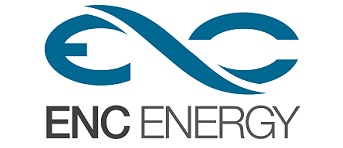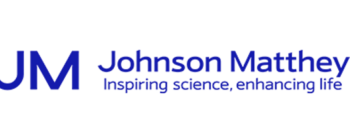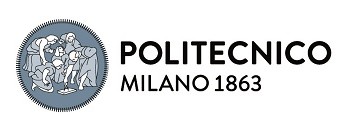Peer-reviewed papers about BIONICO activities:
Palladium based membranes and membrane reactors for hydrogen production and purification: An overview of research activities at Tecnalia and TU/e (Expand for the abstract)[<a class="doi" title="Persistent link using digital object identifier" href="https://doi.org/10.1016/j.ijhydene.2017.03.067" target="_blank" rel="noopener noreferrer" aria-label="Persistent link using digital object identifier">doi.org/10.1016/j.ijhydene.2017.03.067</a>]
In this paper, the main achievements of several European research projects on Pd based membranes and Pd membrane reactors for hydrogen production are reported. Pd-based membranes have received an increasing interest for separation and purification of hydrogen. In addition, the integration of such membranes in membrane reactors has been widely studied for enhancing the efficiency of several dehydrogenation reactions. The integration of reaction and separation in one multifunctional reactor allows obtaining higher conversion degrees, smaller reactor volumes and higher efficiencies compared with conventional systems. In the last decade, much thinner dense Pd-based membranes have been produced that can be used in membrane reactors. However, the thinner the membranes the higher the flux and the higher the effect of concentration polarization in packed bed membrane reactors. A reactor concept that can circumvent (or at least strongly reduce) concentration polarization is the fluidized bed membrane reactor configuration, which improves the heat transfer as well. Tecnalia and TU/e are involved in several European projects that are related to development of fluidized bed membrane reactors for hydrogen production using thin Pd-based (<5 μm) supported membranes for different application: In DEMCAMER project a water gas shift (WGS) membrane reactor was developed for high purity hydrogen production. ReforCELL aims at developing a high efficient heat and power micro-cogeneration system (m-CHP) using a methane reforming fluidized membrane reactor. The main objective of FERRET is the development of a flexible natural gas membrane reformer directly linked to the fuel processor of the micro-CHP system. FluidCELL aims the Proof-of-Concept of a m-CHP system for decentralized off-grid using a bioethanol reforming membrane reactor. BIONICO aims at applying membrane reactors for biogas conversion to hydrogen. The fluidized bed system allows operating at a virtually uniform temperature which is beneficial in terms of both membrane stability and durability and for the reaction selectivity and yield.
Achievements of European projects on membrane reactor for hydrogen production (Expand for the abstract)[<a class="doi" title="Persistent link using digital object identifier" href="https://doi.org/10.1016/j.jclepro.2017.05.122" target="_blank" rel="noopener noreferrer" aria-label="Persistent link using digital object identifier">doi.org/10.1016/j.jclepro.2017.05.122</a>]
Membrane reactors for hydrogen production can increase both the hydrogen production efficiency at small scale and the electric efficiency in micro-cogeneration systems when coupled with Polymeric Electrolyte Membrane fuel cells. This paper discusses the achievements of three European projects (FERRET, FluidCELL, BIONICO) which investigate the application of the membrane reactor concept to hydrogen production and micro-cogeneration systems using both natural gas and biofuels (biogas and bio-ethanol) as feedstock. The membranes, used to selectively separate hydrogen from the other reaction products (CH4, CO2, H2O, etc.), are of asymmetric type with a thin layer of Pd alloy (<5 μm), and supported on a ceramic porous material to increase their mechanical stability. In FERRET, the flexibility of the membrane reactor under diverse natural gas quality is validated. The reactor is integrated in a micro-CHP system and achieves a net electric efficiency of about 42% (8% points higher than the reference case). In FluidCELL, the use of bio-ethanol as feedstock for micro-cogeneration Polymeric Electrolyte Membrane based system is investigated in off-grid applications and a net electric efficiency around 40% is obtained (6% higher than the reference case). Finally, BIONICO investigates the hydrogen production from biogas. While BIONICO has just started, FERRET and FluidCELL are in their third year and the two prototypes are close to be tested confirming the potentiality of membrane reactor technology at small scale.
Effect of Au addition on hydrogen permeation and the resistance to H2S on Pd-Ag alloy membranes (Expand for the abstract)[<a class="doi" title="Persistent link using digital object identifier" href="https://doi.org/10.1016/j.memsci.2017.08.029" target="_blank" rel="noopener noreferrer" aria-label="Persistent link using digital object identifier">doi.org/10.1016/j.memsci.2017.08.029</a>]
In order to make a detailed comparison between Pd-Ag and Pd-Ag-Au membranes according to their H2 permeation properties and sulfide resistance Au was deposited by the electroless plating (ELP) technique onto one half of Pd-Ag membranes. Membranes’ thicknesses are ranged between 2.45 and 3.13 µm. Permeation tests have been carried out from 400 to 600 °C under single gas conditions. The Pd91.7Ag4.8Au3.5 membrane has shown a H2 permeance of 4.71·10−3 mol s−1 m−2 Pa0.5 at 600 °C, which is one of the highest values ever reported in the literature, where the Pd-Ag-Au membranes have exhibited higher hydrogen permeation rates compared to their respective Pd-Ag membranes above 550 °C. The H2 permeation properties have been determined in terms of the degree of H2S inhibition, up to 17 ppm, and subsequent H2 flux recovery rate. Pd-Ag membranes alloyed with gold resisted 12.5 h of H2S exposure showing recovery rates of 85% and 83% for Pd91.5Ag4.7Au3.8 and Pd90.5Ag4.6Au4.9 membranes, respectively, whereas the hydrogen flux of non-gold membranes decreased below detectable values. H2/N2 ideal perm-selectivity of the Pd-Ag membrane was reduced to 18 after H2S tests (starting from > 1308) while Pd-Ag-Au membranes showed a better resistance to sulfur with H2/N2 selectivity values of 793 and 121 (starting from > 4115 and > 2557 respectively). No evidence of the formation of a crystalline sulfide phase on the Pd-Ag-Au alloy membrane surfaces was found in the XRD patterns after H2S exposure and also XPS characterization did not show important changes in the composition before and after the H2S exposure tests. However, SEM images showed a decrease in the thickness of the Pd-Ag membrane and signs of corrosion and roughening on its surface, while gold-alloyed membranes did not show any damage.
Green Hydrogen Production from Raw Biogas: A Techno-Economic Investigation of Conventional Processes Using Pressure Swing Adsorption Unit (Expand for the abstract)[<a href="https://doi.org/10.3390/pr6030019">doi.org/10.3390/pr6030019</a>]
This paper discusses the techno-economic assessment of hydrogen production from biogas with conventional systems. The work is part of the European project BIONICO, whose purpose is to develop and test a membrane reactor (MR) for hydrogen production from biogas. Within the BIONICO project, steam reforming (SR) and autothermal reforming (ATR), have been identified as well-known technologies for hydrogen production from biogas. Two biogases were examined: one produced by landfill and the other one by anaerobic digester. The purification unit required in the conventional plants has been studied and modeled in detail, using Aspen Adsorption. A pressure swing adsorption system (PSA) with two and four beds and a vacuum PSA (VPSA) made of four beds are compared. VPSA operates at sub-atmospheric pressure, thus increasing the recovery: results of the simulations show that the performances strongly depend on the design choices and on the gas feeding the purification unit. The best purity and recovery values were obtained with the VPSA system, which achieves a recovery between 50% and 60% at a vacuum pressure of 0.1 bar and a hydrogen purity of 99.999%. The SR and ATR plants were designed in Aspen Plus, integrating the studied VPSA model, and analyzing the behavior of the systems at the variation of the pressure and the type of input biogas. The SR system achieves a maximum efficiency, calculated on the LHV, of 52% at 12 bar, while the ATR of 28% at 18 bar. The economic analysis determined a hydrogen production cost of around 5 €/kg of hydrogen for the SR case.
On concentration polarisation in a fluidized bed membrane reactor for biogas steam reforming: Modelling and experimental validation (Expand for the abstract)[<a href="http://doi.org/10.1016/j.cej.2018.04.205">doi.org/10.1016/j.cej.2018.04.205</a>]
The production of pure hydrogen through the steam reforming of biogas in a fluidized bed membrane reactor has been studied. A phenomenological one-dimensional two-phase fluidized bed reactor model accounting for concentration polarisation with a stagnant film model has been developed and used to investigate the system performance. The validation of the model was performed with steam reforming experiments at temperatures ranging from 435 °C up to 535 °C, pressures between 2 and 5 bar and CO2/CH4 ratios up to 0.9. The permeation performance of the ceramic-supported PdAg thin-film membrane was first characterized separately for both pure gas and gas mixtures. Subsequently, the membrane was immersed into a fluidized bed containing Rh supported on alumina particles and the reactor performance, viz. the methane conversion, hydrogen recovery and hydrogen purity, was evaluated under biogas steam reforming conditions. The resulting hydrogen purity under biogas steam reforming conditions was up to 99.8%. The model results were in very good agreement with the experimental results, when assuming a thickness of the stagnant mass transfer boundary layer around the membrane equal to 0.54 cm. It is shown that the effects of concentration polarisation in a fluidized bed membrane reactor can be well described with the implementation of a film layer description in the two-phase model.
Potentiality of a biogas membrane reformer for decentralized hydrogen production (Expand for the abstract)[<a class="doi" title="Persistent link using digital object identifier" href="https://doi.org/10.1016/j.cep.2018.04.023" target="_blank" rel="noopener noreferrer" aria-label="Persistent link using digital object identifier">doi.org/10.1016/j.cep.2018.04.023</a>]
This paper investigates the potentiality of membrane reactor for green hydrogen production from raw biogas. The assessment is carried out both from thermodynamic and economic point of view to outline the advantages of the innovative technology with respect to the conventional one based on reforming, water gas shift and pressure swing adsorption unit. Both biogas produced by landfill and anaerobic digestion are considered to evaluate the impact of biogas composition on system design. BIONICO system model is implemented in Aspen Plus and Aspen Custom Modeler to perform respectively the balance of plant with thermal integration and a detailed fluidized bed membrane reactor design. Two permeate side configurations, sweep gas and vacuum pump, were modelled and compared. The adoption of membrane reactor increases the system efficiency by more than 20% points with respect to reference cases. Focusing on the economic results, hydrogen production cost show lower value respect to the reference cases (4 €/kgH2 vs 4.2 €/kgH2) at the same hydrogen delivery pressure of 20 bar. Between the landfill and anaerobic digestion cases, the latter has the lower costs as consequence of the higher methane content.
Long-Term Stability of Thin-Film Pd-Based Supported Membranes (Expand for the abstract)[<a class="doi" title="Persistent link using digital object identifier" href="https://doi.org/10.3390/pr7020106" target="_blank" rel="noopener noreferrer" aria-label="Persistent link using digital object identifier">doi.org/10.3390/pr7020106</a>]
Membrane reactors have demonstrated a large potential for the production of hydrogen via reforming of different feedstocks in comparison with other reactor types. However, the long-term performance and stability of the applied membranes are extremely important for the possible industrial exploitation of these reactors. This study investigates the long-term stability of thin-film Pd-Ag membranes supported on porous Al2O3 supports. The stability of five similarly prepared membranes have been investigated for 2650 h, up to 600 °C and in fluidized bed conditions. Results show the importance and the contribution of the sealing of the membranes at temperatures up to 500 °C. At higher temperatures the membranes surface deformation results in pinhole formation and a consequent decrease in selectivity. Stable operation of the membranes in a fluidized bed is observed up to 450 °C, however, at higher temperatures the scouring action of the particles under fluidization causes significant deformation of the palladium surface resulting in a decreased selectivity.
Life Cycle Assessment and Economic Analysis of an Innovative Biogas Membrane Reformer for Hydrogen Production (Expand for the abstract)[<a class="doi" title="Persistent link using digital object identifier" href="https://doi.org/10.3390/pr7020086" target="_blank" rel="noopener noreferrer" aria-label="Persistent link using digital object identifier">doi.org/10.3390/pr7020086</a>]
This work investigates the environmental and economic performances of a membrane reactor for hydrogen production from raw biogas. Potential benefits of the innovative technology are compared against reference hydrogen production processes based on steam (or autothermal) reforming, water gas shift reactors and a pressure swing adsorption unit. Both biogas produced by landfill and anaerobic digestion are considered to evaluate the impact of biogas composition. Starting from the thermodynamic results, the environmental analysis is carried out using environmental Life cycle assessment (LCA). Results show that the adoption of the membrane reactor increases the system efficiency by more than 20 percentage points with respect to the reference cases. LCA analysis shows that the innovative BIONICO system performs better than reference systems when biogas becomes a limiting factor for hydrogen production to satisfy market demand, as a higher biogas conversion efficiency can potentially substitute more hydrogen produced by fossil fuels (natural gas). However, when biogas is not a limiting factor for hydrogen production, the innovative system can perform either similar or worse than reference systems, as in this case impacts are largely dominated by grid electric energy demand and component use rather than conversion efficiency. Focusing on the economic results, hydrogen production cost shows lower value with respect to the reference cases (4 €/kgH2 vs 4.2 €/kgH2) at the same hydrogen delivery pressure of 20 bar. Between landfill and anaerobic digestion cases, the latter has the lower costs as a consequence of the higher methane content.
Techno-economic assessment in a fluidized bed membrane reactor for small-scale H2 production: effect of membrane support thickness (Expand for the abstract)[<a href="https://doi.org/10.3390/membranes9090116">doi.org/10.3390/membranes9090116</a>]
This paper investigates the influence of the support material and its thickness on the hydrogen flux in Palladium membranes in the presence of sweep gas in fluidized bed membrane reactors. The analysis is performed considering both ceramic and metallic supports with different properties. In general, ceramic supports are cheaper but suffer sealing problems, while metallic ones are more expensive but with much less sealing problems. Firstly, a preliminary analysis is performed to assess the impact of the support in the permeation flux, which shows that the membrane permeance can be halved when the H2 diffusion through the support is considered. The most relevant parameter which affects the permeation is the porosity over tortuosity ratio of the porous support. Afterward, the different supports are compared from an economic point of view when applied to a membrane reactor designed for 100 kg/day of hydrogen, using biogas as feedstock. The stainless steel supports have lower impact on the hydrogen permeation so the required membrane surface area is 2.6 m2 compared to 3.6 m2 of the best ceramic support. This ends up as 5.6 €/kg H2@20bar and 6.6 €/kg H2@700bar for the best stainless steel support, which is 3% lower than the price calculated for the best ceramic support.








